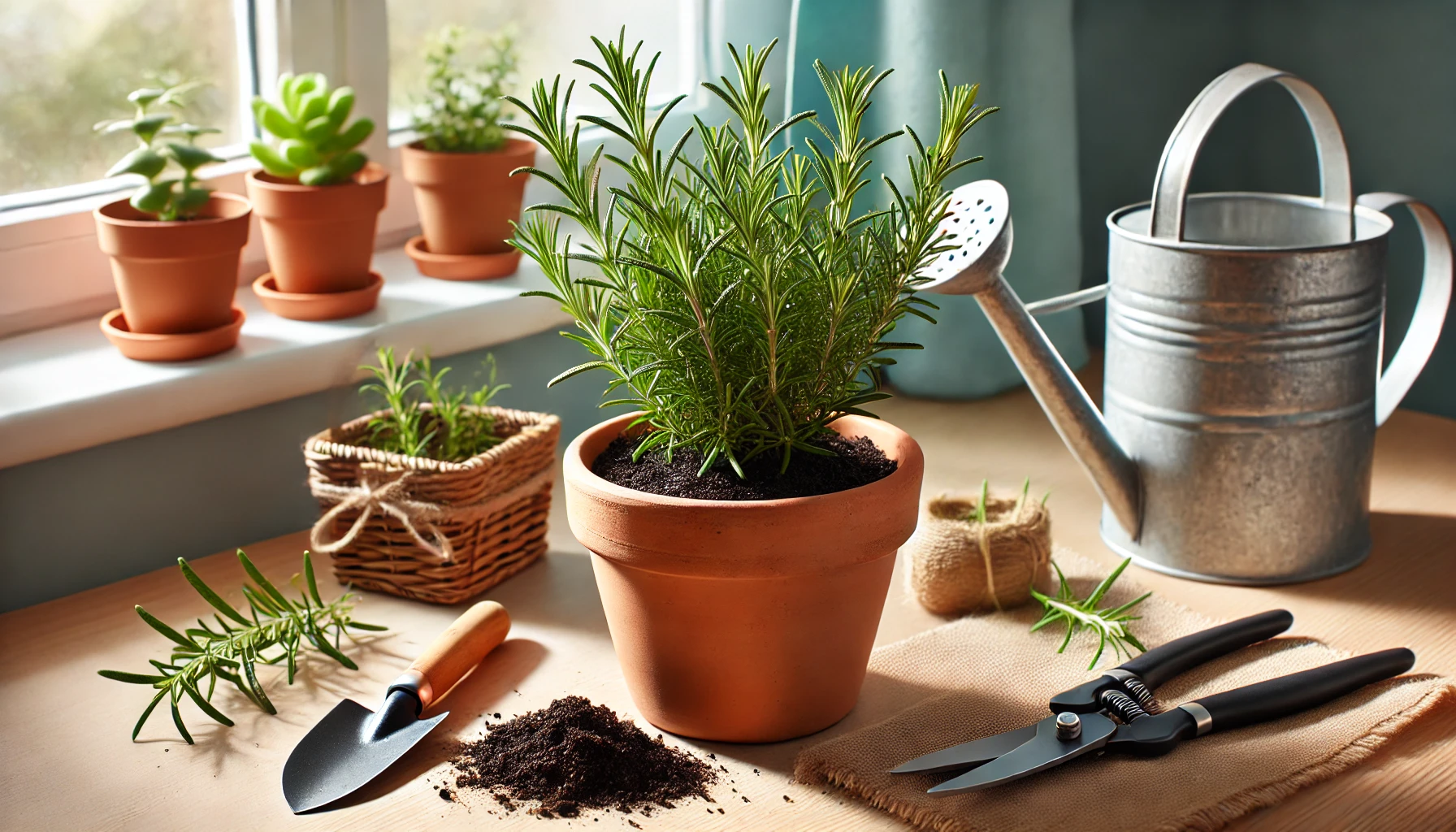Rosemary is a fragrant and versatile herb that thrives in both indoor and outdoor settings. It requires minimal care but needs the right conditions to stay healthy. This guide will help you grow and maintain a thriving rosemary plant at home.
1. Choosing the Right Pot and Soil
- Pot: Use a clay or terracotta pot with drainage holes to prevent root rot.
- Soil: Use a well-draining potting mix with added sand or perlite to improve aeration.
2. Providing the Right Light
- Rosemary needs at least 6-8 hours of sunlight per day.
- Place it in a south- or west-facing window if growing indoors.
- If sunlight is limited, use LED grow lights to supplement natural light.
3. Watering Correctly
- Water only when the top inch of soil feels dry.
- Avoid overwatering, as rosemary prefers slightly dry soil.
- Water at the base rather than on the leaves to prevent mold.
4. Maintaining Temperature and Humidity
- Ideal temperature: 60–75°F (15–24°C).
- Avoid cold drafts and sudden temperature changes.
- Rosemary prefers low to moderate humidity—avoid misting the leaves.
5. Fertilizing for Growth
- Use a balanced liquid fertilizer once a month during the growing season.
- Avoid excessive feeding, as rosemary thrives in lean soil.
6. Pruning and Harvesting
- Regular pruning encourages bushy growth and prevents legginess.
- Harvest by cutting sprigs but never remove more than ⅓ of the plant at once.
7. Common Problems and Solutions
- Yellowing leaves? → Overwatering; let the soil dry before watering again.
- Wilting or leggy growth? → Not enough light; move to a sunnier spot.
- Powdery mildew? → Improve air circulation and avoid wetting the leaves.
8. Enjoying Fresh Rosemary Year-Round
With proper care, rosemary will thrive and provide fresh, aromatic leaves for cooking, teas, and natural remedies. Whether grown in a garden or a sunny indoor spot, it’s a rewarding and useful herb.

